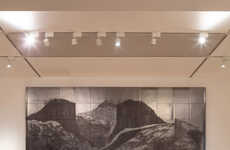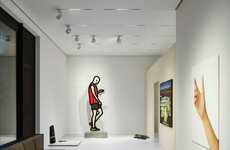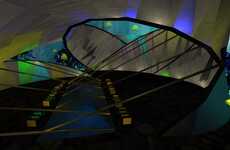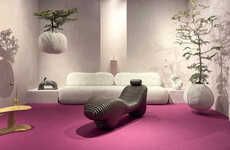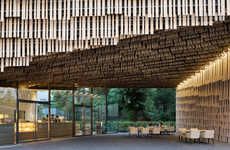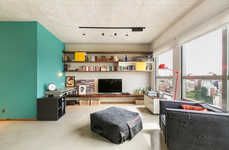
Sensing Spaces Inspires You to Reimagine Architectural Space
Tiffany — January 27, 2014 — Art & Design
References: royalacademy.org.uk & dezeen
The Royal Academy of Arts has opened its doors for an architectural exhibition called Sensing Spaces: Architecture Reimagined in London. The exhibition was inspired by the craft of wooden structures. Architects from all around the world have flocked to the exhibition to show off their art installations. The architects include Kengo Kuma, Álvaro Siza and Eduardo Souto de Moura have taken over the London gallery space with installations that consist of wooden stick structures, scented bamboo installations and timber-constructed monuments.
The Sensing Spaces exhibit features installations that are designed to induce thought amongst its visitors and guests of the gallery; and to discover and explore the essential elements and relationship of architecture and space. According to the curator Kate Goodwin on the idea behind the exhibit, “unlike almost any other art form, architecture is part of our everyday life, but its ability to dramatically affect the way we think, feel and interact with one another is often overlooked.”
The Sensing Spaces exhibit features installations that are designed to induce thought amongst its visitors and guests of the gallery; and to discover and explore the essential elements and relationship of architecture and space. According to the curator Kate Goodwin on the idea behind the exhibit, “unlike almost any other art form, architecture is part of our everyday life, but its ability to dramatically affect the way we think, feel and interact with one another is often overlooked.”
Trend Themes
1. Wood-inspired Architecture - There is a growing trend of architects using wood as a primary material in their installations, providing sustainable and innovative design solutions.
2. Interactive Exhibition Spaces - Exhibitions that engage the senses and encourage visitor participation are becoming increasingly popular, offering opportunities for immersive and interactive experiences.
3. Rediscovering Architectural Impact - The Sensing Spaces exhibition highlights the often overlooked ability of architecture to profoundly influence human emotions and interactions, creating new possibilities for architects to explore and redefine the impact of their designs.
Industry Implications
1. Architecture - The use of wood as a primary material in architectural design presents opportunities for sustainable and aesthetically pleasing structures.
2. Art Galleries - Art galleries can explore the concept of interactive and immersive exhibitions to attract visitors and enhance the appreciation of artistic installations.
3. Experiential Design - The exhibition demonstrates the importance of designing spaces that evoke emotions and engage the senses, offering opportunities for designers to create memorable and impactful experiences across various industries, such as retail, hospitality, and entertainment.
1.3
Score
Popularity
Activity
Freshness


